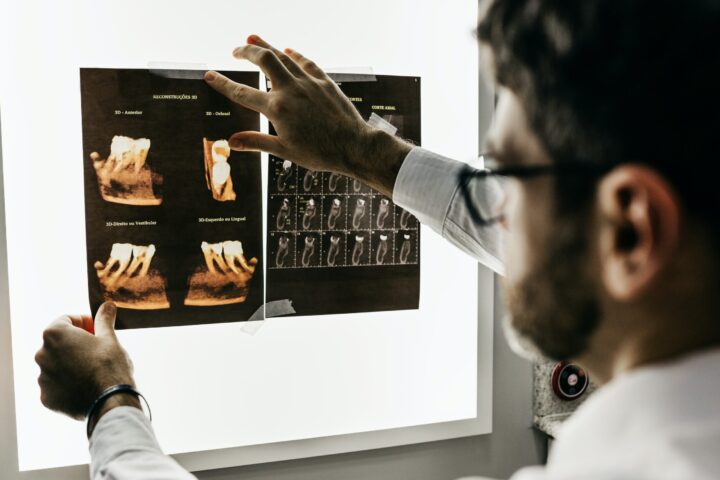Physical therapy is a crucial aspect of healthcare, particularly for individuals recovering from injuries, surgeries, or managing chronic conditions. The goal of physical therapy is to restore movement, improve function, and reduce pain. However, traditional methods of physical therapy can be time-consuming and challenging, both for therapists and patients. This is where Artificial Intelligence (AI) is making a significant impact.
AI is revolutionizing physical therapy by offering new tools and techniques that enhance rehabilitation outcomes. From personalized exercise plans to real-time feedback, AI is helping therapists provide more effective treatments while empowering patients to take control of their recovery. In this article, we’ll explore how AI is transforming physical therapy, the benefits it offers, and the challenges that need to be addressed.
The Role of AI in Physical Therapy
AI in physical therapy involves the use of algorithms, machine learning, and data analysis to enhance rehabilitation practices. These technologies can analyze vast amounts of data, identify patterns, and provide recommendations that improve patient outcomes. Here are some of the key ways AI is being integrated into physical therapy:
1. Personalized Rehabilitation Programs
One of the most significant contributions of AI to physical therapy is the ability to create personalized rehabilitation programs. Traditional therapy often relies on standardized protocols that may not account for individual differences in recovery speed, pain tolerance, or mobility. AI changes this by tailoring therapy plans to each patient’s unique needs.
- Data-Driven Assessments: AI systems can analyze data from various sources, such as patient medical records, previous therapy sessions, and wearable devices, to assess the patient’s current condition. This allows the system to create a personalized rehabilitation plan that is more effective and efficient.
- Adaptive Programs: As the patient progresses through therapy, AI can continuously monitor their progress and adjust the program accordingly. If a patient is struggling with a particular exercise, the AI can suggest modifications or alternative exercises to keep them on track.
- Goal Setting: AI can help set realistic and achievable goals for patients based on their specific condition and progress. This not only keeps patients motivated but also ensures that they are working towards meaningful improvements in their health.
Personalized rehabilitation programs can lead to faster recovery times, fewer complications, and a more positive experience for patients.
2. Real-Time Feedback and Monitoring
One of the challenges in physical therapy is ensuring that patients perform exercises correctly. Improper technique can lead to injury or reduced effectiveness of the therapy. AI addresses this issue by providing real-time feedback and monitoring.
- Wearable Devices: AI-powered wearable devices can track a patient’s movements during exercises, analyzing factors such as joint angles, muscle activity, and posture. The AI system can then provide immediate feedback, guiding the patient to correct their form if necessary.
- Remote Monitoring: For patients who are unable to attend in-person therapy sessions, AI can offer remote monitoring. Through video analysis and motion tracking, therapists can monitor patients’ progress and provide feedback without the need for physical presence.
- Gamification: Some AI systems incorporate gamification elements to make therapy more engaging. For example, patients might receive scores or rewards for completing exercises correctly, which can increase motivation and adherence to the therapy program.
Real-time feedback ensures that patients are performing exercises safely and effectively, leading to better outcomes.
3. Predicting Recovery Outcomes
Predicting how a patient will respond to therapy is challenging, as recovery can vary widely based on factors like age, severity of injury, and overall health. AI can help predict recovery outcomes by analyzing large datasets and identifying patterns that might not be visible to human therapists.
- Outcome Prediction Models: AI can use data from previous patients with similar conditions to predict how a current patient might respond to therapy. This allows therapists to set more accurate expectations and tailor treatment plans accordingly.
- Risk Assessment: AI can also assess the risk of complications or setbacks during recovery. For example, if a patient is at high risk of developing a secondary injury, the AI system can recommend preventive measures or adjustments to the therapy plan.
- Optimizing Treatment Plans: By predicting which treatments are likely to be most effective for a particular patient, AI can help therapists design more efficient and targeted therapy plans. This reduces the trial-and-error approach often associated with rehabilitation.
Predicting recovery outcomes with AI can lead to more efficient therapy programs and improved patient satisfaction.
4. Enhancing Therapist-Patient Interaction
AI is not only improving the technical aspects of physical therapy but also enhancing the interaction between therapists and patients. Effective communication and collaboration are key to successful rehabilitation, and AI is helping to strengthen these relationships.
- Communication Tools: AI-powered communication tools can facilitate better interaction between therapists and patients. For example, patients can use AI-driven apps to report their progress, ask questions, or share concerns. Therapists can then provide timely responses and adjust treatment plans as needed.
- Virtual Assistants: AI virtual assistants can help patients navigate their therapy programs by providing reminders, answering common questions, and offering encouragement. This reduces the burden on therapists while ensuring that patients have access to support whenever they need it.
- Collaborative Platforms: AI can integrate data from various sources, such as wearable devices, medical records, and therapy sessions, into a single platform. This allows both therapists and patients to have a comprehensive view of the rehabilitation process, making it easier to collaborate and make informed decisions.
Enhanced therapist-patient interaction can lead to more personalized care, better adherence to therapy programs, and improved outcomes.
5. Revolutionizing Teletherapy
Teletherapy, or remote physical therapy, has become increasingly popular, especially in the wake of the COVID-19 pandemic. AI is playing a crucial role in making teletherapy more effective and accessible.
- AI-Powered Teletherapy Platforms: AI can enhance teletherapy platforms by providing real-time feedback, monitoring progress, and offering personalized recommendations. This makes remote sessions as effective as in-person therapy.
- Accessibility: AI-driven teletherapy can make rehabilitation more accessible to patients in remote or underserved areas. By reducing the need for travel, AI allows patients to receive high-quality therapy from the comfort of their homes.
- Cost-Effectiveness: AI can also reduce the cost of therapy by automating routine tasks, such as monitoring and progress tracking. This makes therapy more affordable for patients while allowing therapists to focus on more complex cases.
AI is making teletherapy a viable and effective option for a wider range of patients, improving access to care.
Benefits of AI in Physical Therapy
The integration of AI into physical therapy offers numerous benefits, enhancing both the quality of care and the overall patient experience. Here are some of the key advantages:
1. Faster Recovery Times
By personalizing rehabilitation programs, providing real-time feedback, and predicting recovery outcomes, AI helps patients recover more quickly. This means fewer therapy sessions, less pain, and a faster return to normal activities.
2. Improved Patient Engagement
AI-powered tools, such as gamification elements and virtual assistants, make therapy more engaging and enjoyable. This increases patient motivation and adherence to therapy programs, leading to better outcomes.
3. Enhanced Accuracy
AI’s ability to analyze large datasets and provide real-time feedback improves the accuracy of therapy. Patients are more likely to perform exercises correctly, reducing the risk of injury and increasing the effectiveness of the therapy.
4. Cost Savings
AI can reduce the cost of physical therapy by automating routine tasks, such as monitoring and progress tracking. This makes therapy more affordable for patients while freeing up therapists to focus on more complex cases.
5. Increased Accessibility
AI-driven teletherapy platforms make rehabilitation more accessible to patients in remote or underserved areas. This ensures that more people can receive the care they need, regardless of their location or financial situation.
Challenges and Considerations
While AI offers many benefits in physical therapy, some challenges need to be addressed to fully realize its potential.
1. Data Privacy and Security
AI systems require access to sensitive patient data, including medical records and therapy progress. Protecting this data is essential to maintaining patient trust and ensuring compliance with regulations like the Health Insurance Portability and Accountability Act (HIPAA).
- Data Encryption: AI systems should use strong encryption methods to protect patient data from unauthorized access.
- Informed Consent: Patients should be informed about how their data will be used and have the option to opt out if they’re not comfortable sharing certain information.
Ensuring data privacy and security is crucial to the successful implementation of AI in physical therapy.
2. Algorithm Bias
AI systems are only as good as the data they’re trained on. If the training data is biased, the AI system may produce biased recommendations. For example, if an AI system is trained on data from a specific population, it might not provide accurate recommendations for patients from other demographic groups.
- Diverse Data Sets: To reduce bias, AI systems should be trained on diverse data sets that represent different genders, ethnicities, and age groups.
- Continuous Monitoring: AI systems should be continuously monitored and updated to ensure they’re providing accurate and unbiased recommendations.
Addressing algorithm bias is essential to ensuring that all patients receive fair and accurate physical therapy.
3. Integration with Existing Systems
Integrating AI systems with existing healthcare infrastructure can be challenging. For example, electronic health records (EHR) systems may not be compatible with AI-powered physical therapy tools. This can lead to inefficiencies and delays in implementing AI solutions.
- Interoperability: AI systems should be designed to work seamlessly with existing healthcare technologies, including EHRs and therapy management systems.
- User Training: Healthcare providers need training on how to use AI systems effectively. This includes understanding how AI-generated recommendations are made and how to interpret them in the context of patient care.
Successful integration of AI into physical therapy requires collaboration between technology developers, healthcare providers, and regulatory bodies.
The Future of AI in Physical Therapy
As AI technology continues to advance, its role in physical therapy is likely to expand even further. Here’s what the future might hold:
1. AI-Powered Robotic Assistants
AI-powered robotic assistants could play a significant role in physical therapy by assisting patients with exercises and providing real-time feedback. These robots could be used in both clinical settings and at home, offering a new level of support for patients.
- Guided Exercises: Robots could guide patients through exercises, ensuring they’re performed correctly and safely. This could be particularly beneficial for patients with mobility issues or those recovering from surgery.
- Continuous Monitoring: Robotic assistants could continuously monitor patients’ progress and provide feedback to both patients and therapists. This would allow for more precise adjustments to therapy programs and improve outcomes.
AI-powered robotic assistants could revolutionize physical therapy by providing personalized and continuous support to patients.
2. Virtual Reality (VR) Integration
Virtual Reality (VR) is another technology that could be enhanced by AI to create immersive and interactive therapy experiences. AI could analyze patients’ movements in real time and adjust the VR environment to provide a more effective therapy session.
- Immersive Rehabilitation: AI-powered VR could simulate real-world scenarios that patients need to navigate as part of their rehabilitation. For example, a patient recovering from a stroke could practice walking in a virtual park or navigating a virtual grocery store.
- Customizable Environments: AI could create customizable VR environments tailored to each patient’s specific needs and preferences. This would make therapy more engaging and effective.
The integration of AI and VR could open up new possibilities for physical therapy, making it more dynamic and patient-centered.
3. AI-Driven Research and Development
AI has the potential to drive research and development in physical therapy by analyzing data from large populations and identifying new treatment methods. This could lead to the discovery of more effective therapies and a better understanding of how different patients respond to treatment.
- Data-Driven Insights: AI could analyze data from thousands of patients to identify trends and patterns that might not be visible to human researchers. This could lead to new insights into the most effective rehabilitation techniques for different conditions.
- Predictive Modeling: AI could create predictive models to forecast how different patients will respond to therapy. This could help researchers develop more targeted and personalized treatment approaches.
AI-driven research and development could lead to significant advancements in physical therapy, improving outcomes for patients around the world.
AI is transforming physical therapy by offering new tools and techniques that improve rehabilitation outcomes. From personalized rehabilitation programs to real-time feedback and monitoring, AI is helping therapists provide more effective and efficient care. While there are challenges to address, such as data privacy and algorithm bias, the potential benefits of AI in physical therapy are immense.
As AI technology continues to evolve, it will likely play an even greater role in physical therapy, offering new possibilities for personalized care, enhanced patient engagement, and improved outcomes. By embracing AI and addressing its challenges, we can ensure that physical therapy becomes more effective, accessible, and patient-centered for everyone.


































I was suggested this web site by my cousin Im not sure whether this post is written by him as no one else know such detailed about my trouble You are incredible Thanks
It actually surprise us! Our purpose is to connect people and acknowledge about our modern world concern. We fulfill that. Stay connect with us. Thank you
This is the right blog for anyone who wants to find out about this topic. You realize so much its almost hard to argue with you (not that I actually would want…HaHa). You definitely put a new spin on a topic thats been written about for years. Great stuff, just great!